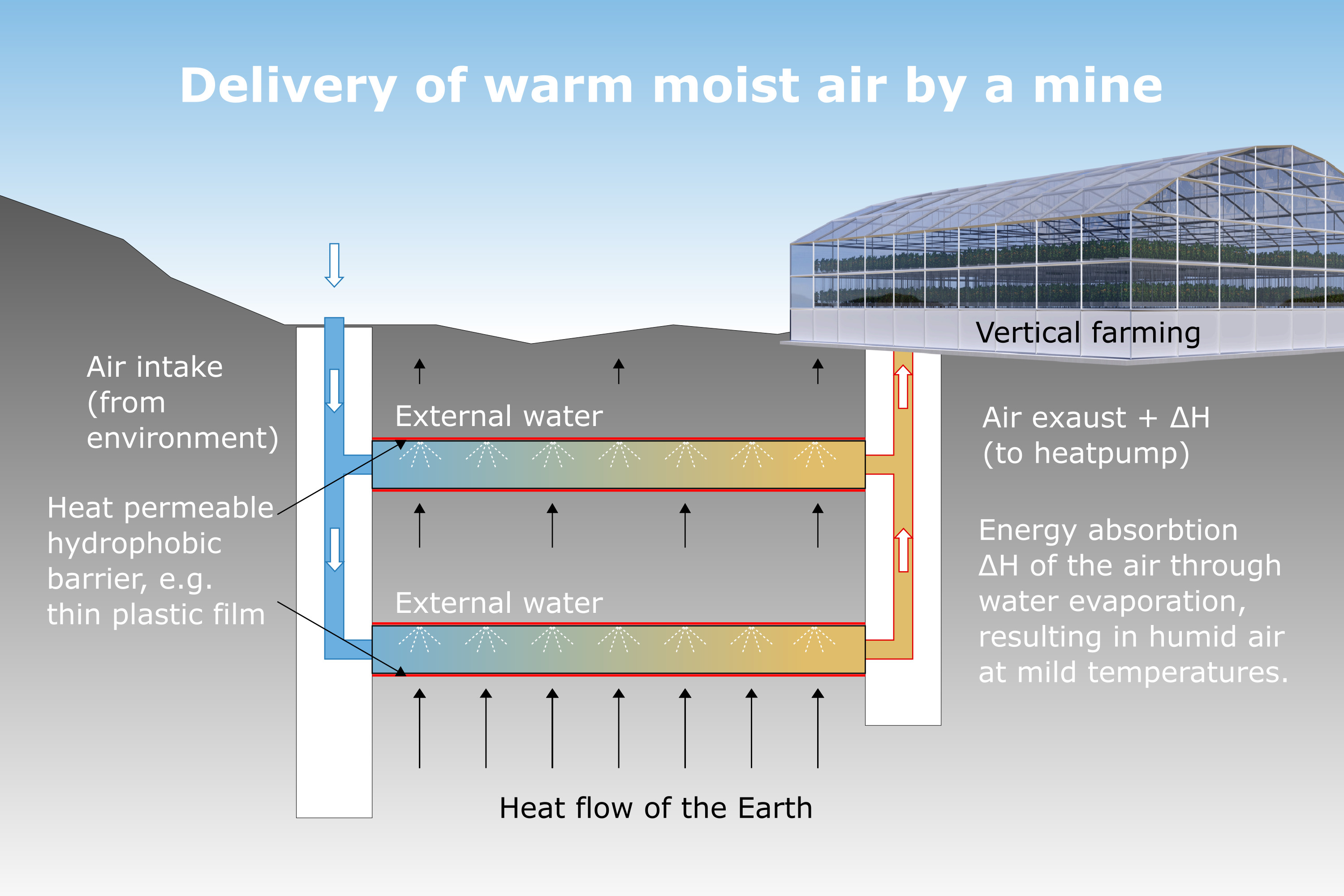A mine as heat source for vertical farming

TAO is strong in inflatable structures for architecture and for aeronautics for high-altitude platforms and telecommunication balloons. And that is why we have also designed a TAO biosphere that combines vertical farming, aquaponics, wellness and habitats, among other things. But such biospheres can be energy-co and you don't always have to generate this energy via photovoltaics or wind energy. How about using the existing heat in old mines?
And our idea was born
The principle: A mine provides access to geothermal energy, therefor it can always be used as a low-temperature heat source. TAO uses moist air as heat transport medium, the same heat transport medium as in the global atmosphere for all meteorological processes. On a global scale, this medium is able to transport gigantic amounts of energy. Humidification and dehumidification processes of the mine's ventilation air are thus required to enable heat transport and heat recovery.
- You can use the warm, moist air from the mine directly for vertical farming.
- Or it can be used (indirectly) to release stored solar energy. This solar energy was stored when it was used to dry hygroscopic material. In the dried state, this material can be easily stored with any storage period. The solar energy can be released as heat, which you can use for vertical farming and more. The physical process is called adsorption and the heat can be used, when the moist and warm air of the mine is allowed to flow through a fill of the hygroscopic material; in this process, the air is heated by the released heat of condensation, depending on the energy content, to over 100°C. This is the process of an adsorption heat pump. The hygroscopic material can be regenerated and dried by the sun.
- Or the heat from the mine is used to operate an updraft power plant for the generation of electric current.
The whole open loop system of an adsorption heat pump operates with minimal carbon footprint, transports geothermal energy in combination with solar energy, releases condensation heat as process heat, can be operated as a storage system with any storage duration, and is entirely independent of fluctuations or variations resulting from weather patterns except for regeneration.
Next steps
A mine often has passenger and goods lifts, underground roads and workshops. These investments should not be in vain after the end of the mine's use. It is therefore important to check whether the mine can be used for other purposes. A possible geothermal use of the mine should be examined. Such an examination is suggested by the fact that the mine has such a great bottom depth that permanent temperatures of round about 30 degrees prevail at the deepest point of the mine.
⇒ A potential analysis of the mine is carried out to determine what possible energy can be extracted. In addition, the geography and the infrastructure will be analysed, too.
Costs
- At the beginning there is a feasibility study done by TAO: there are costs for a technical feasibility study per mine. The price for the study can be estimated and presented as a proposal for decision-making once we have the data for the mine mines.
- The cost for the construction of a solar thermal heated greenhouse (with vertical extension) based on the feasibility study depends on the size and technical concept for the reuse of the mine and will be estimated in the study in the planning stage.
- TAO can plan, accompany and build self-sufficient greenhouses as project manager together with architects and developers on site.
